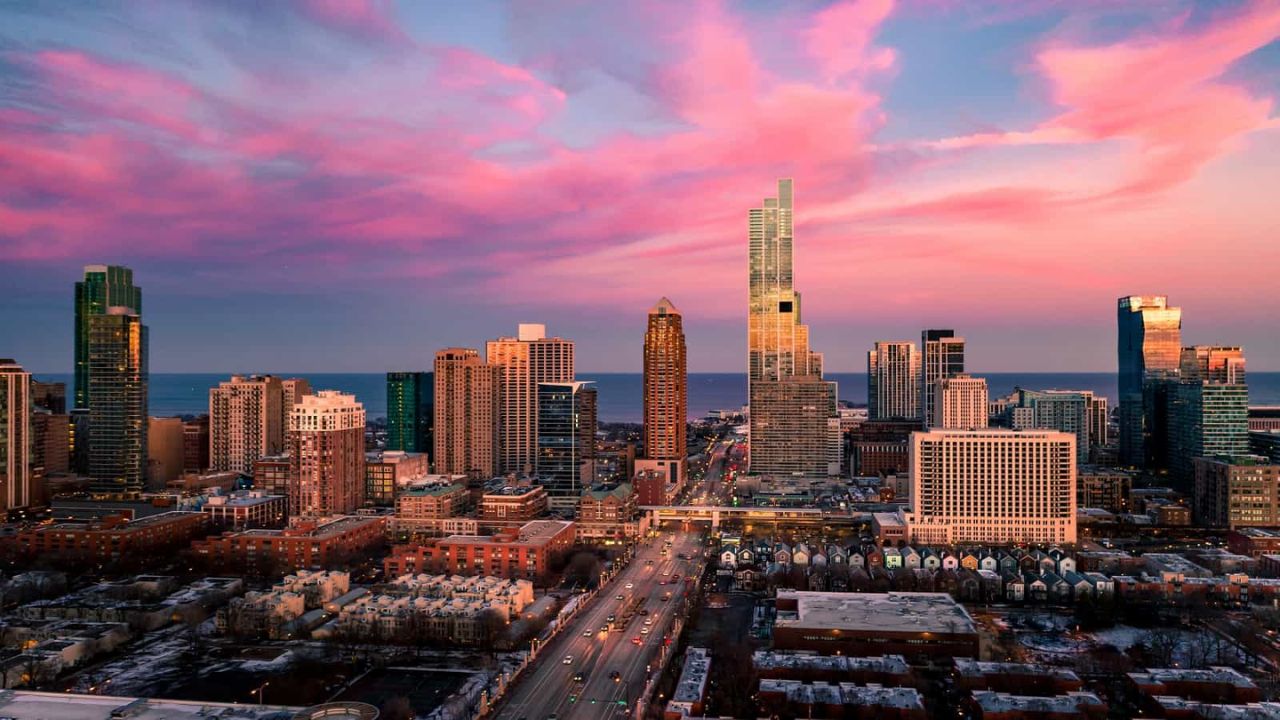Cook County stands as Illinois’ most populous county and the second-most populous in the United States, boasting over 5 million residents. The county encompasses not only the vibrant city of Chicago, the nation’s third-largest, but also numerous suburbs and rural areas. However, Cook County grapples with a substantial poverty rate of 13.8%, impacting more than 700,000 individuals who live below the federal poverty line.
The distribution of poverty is far from uniform, with certain neighborhoods facing more acute challenges. In this article, we delve into the five most impoverished neighborhoods in Cook County, drawing on data from the U.S. Census Bureau’s American Community Survey 5-year estimates for 2021.
1. Riverdale
Riverdale, a community area situated on Chicago’s far south side along the banks of the Little Calumet River, is home to roughly 7,000 residents, with a demographic makeup comprising 97% Black or African American. Riverdale boasts the highest poverty rate in Cook County, with a staggering 60.9% of its residents living below the poverty line.
The area contends with high unemployment rates (28.9%), elevated levels of violent crime (2,197 per 100,000 people), and a significant number of vacant housing units (28.4%). Furthermore, Riverdale faces substantial environmental and health challenges, including air pollution, flooding, lead poisoning, and asthma.
Also Read:
2. Fuller Park
Fuller Park, located on Chicago’s south side near the Dan Ryan Expressway and the Chicago Skyway, is home to approximately 2,000 residents, with 95% identifying as Black or African American. Fuller Park ranks second in Cook County for its poverty rate, with 55.6% of its residents living below the poverty line.
The community also contends with high unemployment (25.8%), elevated violent crime rates (1,590 per 100,000 people), and a significant number of vacant housing units (30.9%). Fuller Park faces challenges arising from insufficient investment, development, limited access to public transportation, healthcare, and educational resources.
Also Read:
3. Englewood
Englewood, a large community area on Chicago’s south side, is home to around 25,000 residents, with 94% identifying as Black or African American. Englewood ranks third in Cook County for its poverty rate, with 44.8% of its residents living below the poverty line. The area also grapples with high unemployment (21.6%), elevated violent crime rates (1,374 per 100,000 people), and numerous vacant housing units (24.6%).
Englewood has a long history of grappling with deindustrialization, disinvestment, segregation, and gang violence. Nevertheless, it also possesses a resilient sense of community, with numerous local organizations and initiatives actively working to improve residents’ quality of life.
Also Read:
4. West Garfield Park
West Garfield Park, a community area on Chicago’s west side adjacent to the Eisenhower Expressway, is home to approximately 18,000 residents, with 92% identifying as Black or African American. West Garfield Park claims the fourth-highest poverty rate in Cook County, with 43.6% of its residents living below the poverty line.
The community also grapples with high unemployment (22%), elevated violent crime rates (1,561 per 100,000 people), and a substantial number of vacant housing units (23.9%). Challenges include issues related to drug abuse, homelessness, mental health, and incarceration. However, the community also boasts a rich history and culture, along with valuable assets such as parks, libraries, schools, and churches.
Also Read:
5. North Lawndale
North Lawndale, another community area on Chicago’s west side bordered by Roosevelt Road and Ogden Avenue, is home to approximately 36,000 residents, with 89% identifying as Black or African American. North Lawndale claims the fifth-highest poverty rate in Cook County, with 42.9% of its residents living below the poverty line.
The community contends with high unemployment (19%), elevated violent crime rates (1,216 per 100,000 people), and a notable number of vacant housing units (21.8%).
Once a thriving industrial and residential hub, North Lawndale faced urban decay, white flight, riots, and disinvestment in the latter half of the 20th century. However, it is now undergoing a process of revitalization and redevelopment, with efforts to preserve its historic and cultural heritage while creating opportunities for its residents.
Also Read:
Conclusion
Cook County, Illinois, a diverse and dynamic region encompassing urban and rural areas, grapples with a significant poverty rate that disproportionately affects specific neighborhoods, particularly those on Chicago’s south and west sides. These neighborhoods confront multifaceted challenges spanning economic, social, environmental, and health domains.
Nevertheless, they possess numerous strengths, including rich histories, vibrant cultures, strong community bonds, and valuable assets. Addressing the root causes of poverty and inequality, along with supporting local initiatives and organizations dedicated to enhancing residents’ lives, can foster a more prosperous and equitable Cook County for all its inhabitants.
